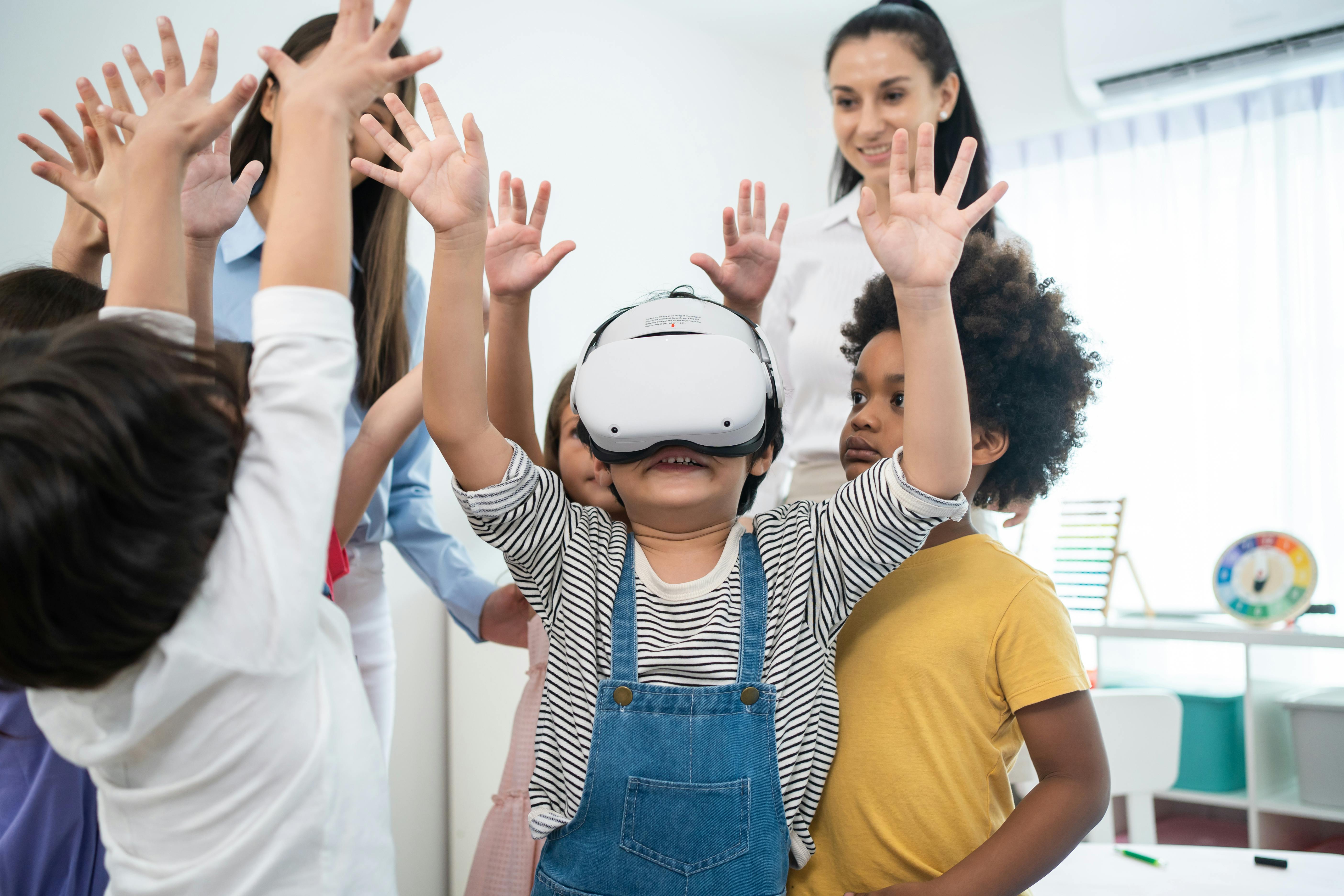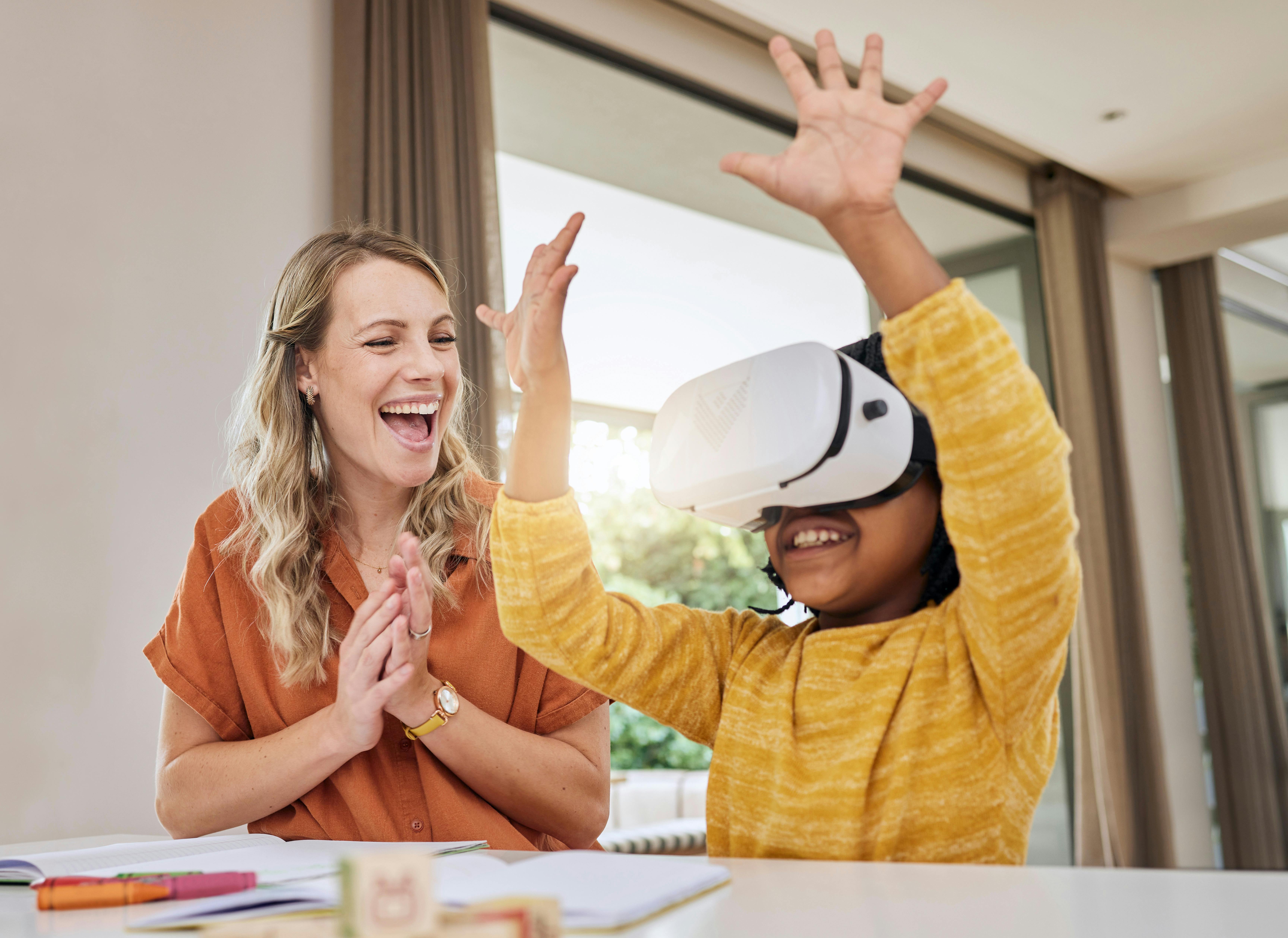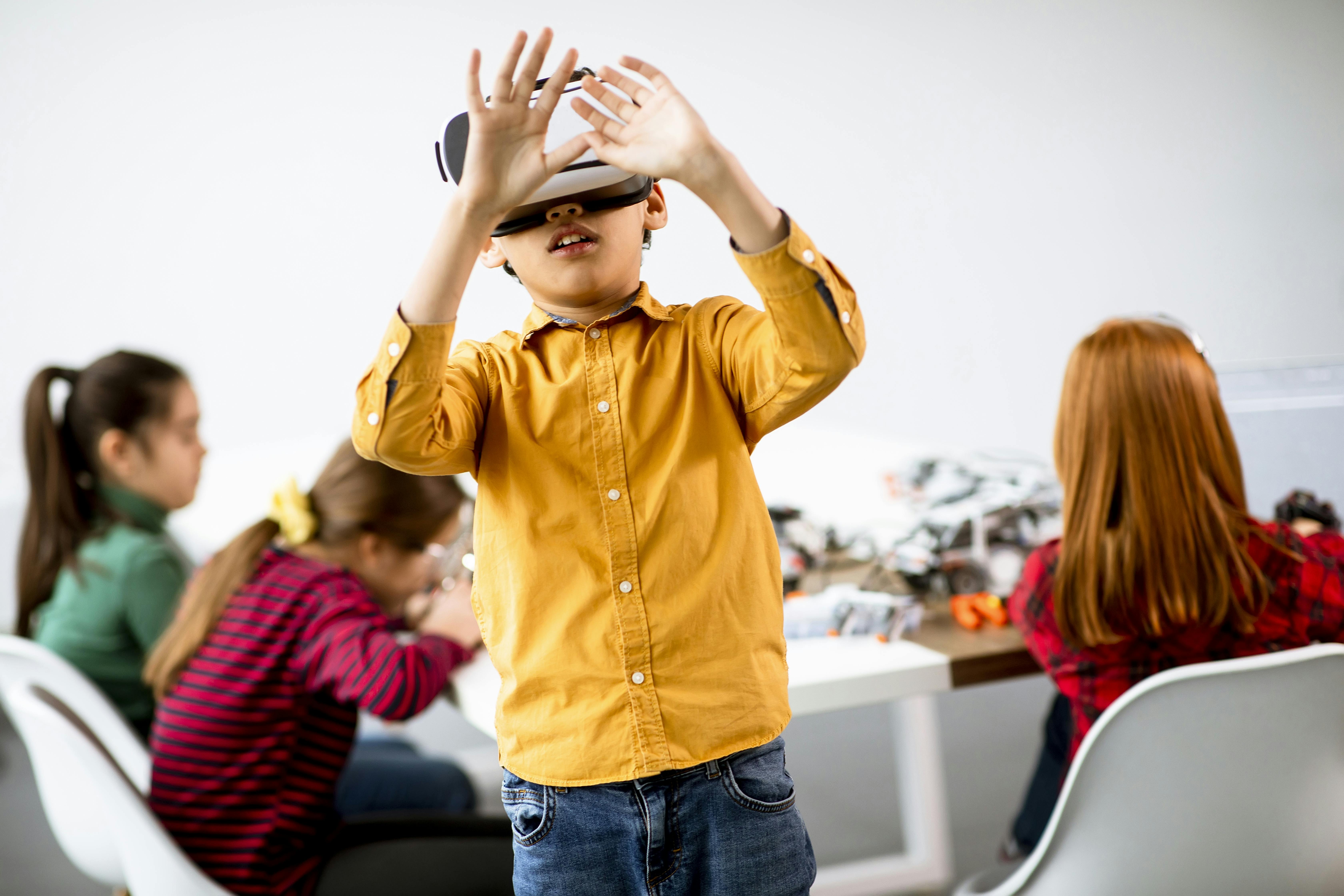
Learning Through Partnership: Insights from Our Work with Ysgol Y Deri

Author: Steve Banbury
View profile
Back in January, we shared the exciting news that Campfire Digital had been awarded Media Cymru Seed Funding to explore a new approach to immersive learning. Our goal? To reimagine virtual reality not just as a tool for learners with diverse needs, but as an environment co-designed with them from the start.
While that announcement outlined a vision, today we’re proud to share more about one of the most important parts of that journey so far: our growing collaboration with Ysgol Y Deri, a school in Penarth, Wales, renowned for its inclusive ethos and specialist expertise. The Ysgol Y Deri team of teachers and support staff brings a wealth of experience supporting learners with complex and varied needs, and they’ve generously welcomed us into their world.
Inclusive Immersive Learning Matters
Immersive learning holds tremendous potential, especially for learners who might struggle to engage with traditional classroom formats. But VR hasn’t always been accessible. Many current offerings are designed with a “one-size-fits-all” mindset, assuming physical, sensory, and cognitive baselines that don’t reflect the diversity of real-world learners.
We believe VR can do better. It can be calming, engaging, empowering, but achieving these core goals can only happen through a process of design in close collaboration with those who would actually use it. For this reason, we set out to create a VR experience that isn’t a simple attempt at tailoring for Special Educational Needs (SEN) environments, but one that actively responds to feedback from the people who know those environments best. We are not simply refining a product, we are rethinking the role immersive technology can play in inclusive education, and the feedback we are receiving from YYD’s staff is helping us ask better questions, challenge our assumptions, and deepen our understanding of what meaningful accessibility looks like.
Learning in Context: Meeting Ysgol Y Deri
This partnership isn’t happening in a vacuum. Our research and development process is drawing on a broad body of work - academic studies on VR in education, publications exploring learning differences, and long-standing practices in special educational needs provision. So, in this sense, we’re not starting from scratch, but aligning our approach with the hard-won knowledge of those who have walked this path before. The difference is that we’re doing it in close collaboration with those at the heart of the challenge - teachers, support staff, and learners themselves.
From our earliest conversations with the team at Ysgol Y Deri (YYD), it was clear we’d found the right partners. YYD is more than just a school - it’s a community built around empathy, expertise, and inclusion. Many people will already be familiar with them through the recent three-part BBC documentary, A Special School, which brought national attention to their work and values. Their staff bring a depth of insight that can only come from years of experience supporting learners with complex and varied needs. From sensory profiles to communication challenges, from motor skills to emotional regulation, they understand what makes an educational environment truly work for their students. And from day one, they welcomed us into their world with openness and curiosity.

Listening Deeply: What 10 Hours of Conversations Revealed
As part of our collaboration, we conducted over 10 hours of in-depth interviews with a cross-section of YYD’s staff. These weren’t just surface-level chats - they were candid, thoughtful conversations that gave us a front-row seat to the everyday realities of using immersive technology in a SEN context.
We heard stories about the highs and lows of trying to use existing VR setups in the classroom. One educator described a situation where a student, excited to explore a calming nature scene, quickly became overwhelmed by the unpredictability of flashing lights and abrupt transitions. The lack of real-time control left the teacher feeling helpless. "Sometimes it’s not about adding more features," they told us, "it’s about giving us better control of what’s already there. Brightness, colour, sound - it can all be too much, too fast."
We also heard about the emotional impact of feeling locked out of a tool that should be accessible. Even simple things like synchronising what the teacher is doing on-screen with what the student sees inside the headset can be difficult.
These insights weren’t isolated. They pointed to systemic issues with the way most VR platforms approach inclusion. We learned about the pain points, both big and small - issues that, if addressed, could make immersive tech not just functional, but transformative.
What Needs to Change
As an example, starting a video or learning experience in a virtual reality (VR) headset might seem like a straightforward task - but in real-world educational and care environments, it’s often one of the biggest hurdles. For students who are neurodivergent or have physical disabilities, the typical VR interface - almost always designed with tech-savvy consumers in mind - can present a maze of menus, buttons, and unfamiliar interactions. Even for support staff, navigating these systems can be a source of stress, especially when juggling multiple learners with different needs. When starting an experience requires logging in, locating content, and handling unfamiliar controllers, something as simple as launching a video can quickly become a barrier to learning.
The challenge is not just one of design, but also of context. In classrooms and therapeutic settings, time is tight, attention spans are short, and every minute counts. If a student needs adult assistance to start a VR experience - and that process takes several steps or fails altogether - the opportunity for meaningful engagement can vanish. Compounding this, many systems offer little control over environmental variables like brightness, volume, or colour palettes - factors that can be crucial for learners with sensory sensitivities or heightened emotional states. Without the ability to quickly adjust these elements, VR can easily become overstimulating rather than supportive.
Co-Creation in Action
To address these challenges, we’re rethinking how VR content is delivered and controlled. Our approach centres on simplicity, accessibility, and flexibility. We’re developing systems where experiences can be launched remotely by a teacher or therapist, ensuring that learners don’t need to navigate menus themselves. Content is preloaded and easy to access, with no dependency on internet connections or login screens. Just as importantly, we’re working toward systems that allow environmental settings - like audio levels or colour contrast - to be quickly tailored to individual needs on the fly.
Ultimately, our aim is to remove friction from the process - so that educators can focus on teaching, learners can focus on exploring, and VR can live up to its promise as a tool for inclusion, imagination, and connection. When used well, it doesn’t just replicate the real world - it expands it, especially for those who need it most.

Rethinking What Immersive Tech Can Be
Through this project, we’re not just tweaking an interface or adapting a tool - we’re rethinking what immersive technology can be. We’re asking fundamental questions:
- What does predictability mean in a virtual environment?
- How do you build emotional safety into a world made of polygons and shaders?
- Can VR become a space where learners feel more in control, not less?
YYD’s contribution to these questions has been nothing short of profound. Their honesty and openness have helped us challenge our assumptions, ask better questions, and deepen our commitment to real-world accessibility.
At times, the work feels like building a bridge between two worlds - the complex, high-potential landscape of VR and the grounded, human reality of the classroom. But with every conversation, that gap becomes smaller.

Looking Ahead
Our collaboration with Ysgol Y Deri will continue over the coming months, with further co-design sessions, feedback loops, and pilot testing planned. These conversations are feeding directly into our design and development sprints, helping us ensure that every decision - from interface to interactivity - reflects the priorities of those who’ll actually use the technology.
Ultimately, we believe that the future of immersive learning must be shaped by the people it’s meant to support. That means listening first, iterating often, and being open to surprise.
To this end we’re already looking ahead to broader partnerships across the UK. We believe the learnings from this project could benefit not only SEN schools but also mainstream settings that want to support neurodivergent students more effectively. There may also be applications in adult education, museums, and wellbeing-focused immersive spaces.
Staying Connected
We’d like to thank the entire team at Ysgol Y Deri for their time, insight, and generosity. Their input is already having a lasting impact on our work - and we’re excited to continue learning alongside them.
As the project evolves, we’ll be sharing further updates, findings, and reflections. If you’re interested in inclusive innovation, immersive learning, or the future of education technology, we’d love for you to follow the journey!

Follow Our Journey
Let’s reimagine the future of immersive technology - together!
camp